India, a land of unparalleled diversity, is a tapestry woven with vibrant cultures, languages, and traditions. From the snow-capped peaks of the Himalayas to the sun-kissed beaches of Kerala, every corner of this vast nation tells a unique story. We are blessed to call India our home, where ancient history and modernity coexist in a beautiful symphony. The kaleidoscope of festivals, the warmth of its people, and the richness of its heritage make India truly incredible.
This post is dedicated to celebrating the spirit of India through an engaging Independence Day quiz. Let’s take a journey together through the history of our great nation, exploring its vibrant culture and honouring the heroes who fought for our freedom.
Table of Contents
Vibrant India
India is not just a country; it is an experience that touches the soul. Every state, every city, and every village in India has its own distinct identity, yet they all come together to form this incredible nation. The vibrant colours of Rajasthan’s fairs, the tranquil backwaters of Kerala, and the spiritual aura of Varanasi are just glimpses of what India offers to those who seek to explore its depths. We have traveled across this land and each journey leaves us more in awe of India’s timeless beauty and rich heritage.
As we walk through the bustling streets of Mumbai or gaze at the serene landscape of the northeastern states, we realize that India is a land of contrasts, yet bound together by a shared history and culture. The resilience of its people, the diversity of its traditions, and the harmony in its chaos make India a destination like no other.
We find ourselves endlessly fascinated by the stories of its past, the vibrancy of its present, and the promise of its future. It is this essence of India that we celebrate every Independence Day, remembering the journey of our nation from the shadows of colonialism to the dawn of freedom.
Indian Freedom Struggle
The Indian freedom struggle is a testament to the indomitable spirit of our nation. This struggle was not just a battle fought with arms, but a movement fueled by the courage and sacrifice of countless freedom fighters of India.
From the early revolts of the 19th century to the non-violent protests led by Mahatma Gandhi, every step of the journey was marked by the determination to achieve Swaraj or self-rule. The Indian freedom struggle united people from different walks of life, all fighting for the common cause of freedom. It is a story of resilience, unity, and an unyielding belief in the idea of an independent India.
Freedom Fighters of India
The freedom fighters of India were the torchbearers of our independence. Each one of them, whether known or unsung, played a crucial role in shaping the destiny of our nation. Leaders like Mahatma Gandhi, Subhas Chandra Bose, Bhagat Singh, and Sardar Vallabhbhai Patel became symbols of courage and sacrifice during the Indian freedom struggle. But it wasn’t just the prominent leaders; millions of ordinary men and women contributed to this cause in their own ways, risking their lives to free India from colonial rule.
The Indian freedom struggle was a collective effort, with freedom fighters from all corners of the country joining forces. Their stories continue to inspire us today, reminding us of the value of the freedom we enjoy. It is because of their sacrifices that we celebrate Independence Day with pride, cherishing the liberty and sovereignty they fought so hard to secure. Let’s take a moment to honor these brave souls and reflect on the legacy they have left behind.
Independence Day Quiz | Questions on Independence Day
Right from our school days, we have been taught about the rich history and diverse culture of our India. We’ve learned about the freedom fighters of India, the significant events of the Indian freedom struggle, and the sacrifices made to attain independence.
But even after all these years, we realize that one lifetime is not enough to fully understand the depths of this incredible country. As we grow older, our love for India deepens, and our curiosity to know more about its history and heritage never fades. This is why, as true patriots, we decided to curate an Independence Day quiz – a fun and engaging way to explore more about our beloved nation.
This quiz is not just for students; it’s for anyone who has a love for India and a desire to learn more about its journey to independence. We’ve included a wide range of Independence Day quiz questions and answers that delve into the significant moments of our history, the brave freedom fighters of India, and the events that shaped our nation.
Whether you’re a school student, a college student, or someone who simply enjoys learning about history, this quiz on Indian Independence Day will challenge your knowledge and deepen your appreciation for India. We hope this Indian Independence quiz will be a fun and educational experience for everyone, young and old alike, as we continue to honour our freedom fighters and remember the Indian freedom struggle.
Independence Day Quiz Questions and Answers | Independence Day Quiz About India
This section of the post is dedicated to presenting an engaging Independence Day quiz that we’ve curated for you. Here, we’ve gathered 100 Independence Day quiz questions and answers to test your knowledge about our nation’s history, the freedom fighters of India, and the events of the Indian freedom struggle. Let’s dive into these questions on Independence Day and see how well you know your country.
Who was the first Prime Minister of independent India?
A) Sardar Vallabhbhai Patel
B) Jawaharlal Nehru
C) Subhas Chandra Bose
D) Mahatma Gandhi
Answer: B) Jawaharlal Nehru
When did India gain its independence from British rule?
A) 26th January 1950
B) 15th August 1947
C) 2nd October 1947
D) 12th March 1930
Answer: B) 15th August 1947
Who is known as the “Iron Man of India”?
A) Bhagat Singh
B) Mahatma Gandhi
C) Sardar Vallabhbhai Patel
D) Subhas Chandra Bose
Answer: C) Sardar Vallabhbhai Patel
Which movement did Mahatma Gandhi launch in 1942 demanding an end to British rule in India?
A) Non-Cooperation Movement
B) Civil Disobedience Movement
C) Quit India Movement
D) Salt Satyagraha
Answer: C) Quit India Movement
Who gave the slogan “Do or Die” during the Indian freedom struggle?
A) Bhagat Singh
B) Jawaharlal Nehru
C) Mahatma Gandhi
D) Subhas Chandra Bose
Answer: C) Mahatma Gandhi
Which freedom fighter of India was the leader of the Azad Hind Fauj?
A) Subhas Chandra Bose
B) Mahatma Gandhi
C) Bhagat Singh
D) Jawaharlal Nehru
Answer: A) Subhas Chandra Bose
The Jallianwala Bagh massacre took place in which year?
A) 1919
B) 1920
C) 1930
D) 1942
Answer: A) 1919
Who is referred to as the “Father of the Nation” in India?
A) Sardar Vallabhbhai Patel
B) Jawaharlal Nehru
C) Subhas Chandra Bose
D) Mahatma Gandhi
Answer: D) Mahatma Gandhi
Which event marked the beginning of the Indian freedom struggle in 1857?
A) Quit India Movement
B) Non-Cooperation Movement
C) Indian Rebellion of 1857
D) Civil Disobedience Movement
Answer: C) Indian Rebellion of 1857
Who wrote the book “Discovery of India”?
A) Mahatma Gandhi
B) Jawaharlal Nehru
C) Bhagat Singh
D) Sardar Vallabhbhai Patel
Answer: B) Jawaharlal Nehru
Who was the leader of the Salt March in 1930?
A) Jawaharlal Nehru
B) Subhas Chandra Bose
C) Sardar Vallabhbhai Patel
D) Mahatma Gandhi
Answer: D) Mahatma Gandhi
What was the main objective of the Quit India Movement?
A) To demand complete independence from British rule
B) To establish a new political party
C) To negotiate with the British government
D) To gain economic concessions
Answer: A) To demand complete independence from British rule
Which Indian freedom fighter is known for the slogan “Inquilab Zindabad”?
A) Bhagat Singh
B) Mahatma Gandhi
C) Subhas Chandra Bose
D) Jawaharlal Nehru
Answer: A) Bhagat Singh
In which year was the Indian National Congress founded?
A) 1885
B) 1905
C) 1920
D) 1942
Answer: A) 1885
Who led the Dandi March against the British salt tax?
A) Subhas Chandra Bose
B) Jawaharlal Nehru
C) Sardar Vallabhbhai Patel
D) Mahatma Gandhi
Answer: D) Mahatma Gandhi
What was the role of the Indian National Army in the freedom struggle?
A) To spread non-violent protests
B) To fight against British forces
C) To organize mass movements
D) To negotiate with British leaders
Answer: B) To fight against British forces
Which movement was launched by Mahatma Gandhi in 1919 against the Rowlatt Act?
A) Quit India Movement
B) Non-Cooperation Movement
C) Civil Disobedience Movement
D) Khilafat Movement
Answer: B) Non-Cooperation Movement
Who was the first Governor-General of independent India?
A) Lord Mountbatten
B) C. Rajagopalachari
C) Dr. Rajendra Prasad
D) Sardar Vallabhbhai Patel
Answer: B) C. Rajagopalachari
Which day is observed as Martyrs’ Day in India to honor the assassination of Mahatma Gandhi?
A) 26th January
B) 30th January
C) 15th August
D) 2nd October
Answer: B) 30th January
Who was the leader of the Indian National Congress during the Quit India Movement?
A) Mahatma Gandhi
B) Subhas Chandra Bose
C) Jawaharlal Nehru
D) Sardar Vallabhbhai Patel
Answer: A) Mahatma Gandhi
Which Indian leader coined the term “Jai Hind”?
A) Subhas Chandra Bose
B) Jawaharlal Nehru
C) Sardar Vallabhbhai Patel
D) Bhagat Singh
Answer: A) Subhas Chandra Bose
What was the significance of the Lahore Session of the Indian National Congress in 1929?
A) It led to the Non-Cooperation Movement
B) It passed the resolution for complete independence (Purna Swaraj)
C) It initiated the Quit India Movement
D) It marked the beginning of the Indian freedom struggle
Answer: B) It passed the resolution for complete independence (Purna Swaraj)
Who was the first woman President of the Indian National Congress?
A) Sarojini Naidu
B) Vijaya Lakshmi Pandit
C) Annie Besant
D) Kasturba Gandhi
Answer: C) Annie Besant
Which Act passed by the British government led to widespread protests and the Jallianwala Bagh massacre?
A) Government of India Act 1935
B) Rowlatt Act 1919
C) Indian Councils Act 1909
D) Montagu-Chelmsford Reforms 1919
Answer: B) Rowlatt Act 1919
Who was the Viceroy of India at the time of India’s independence?
A) Lord Curzon
B) Lord Wavell
C) Lord Mountbatten
D) Lord Linlithgow
Answer: C) Lord Mountbatten
Which Indian leader led the protest against the partition of Bengal in 1905?
A) Bal Gangadhar Tilak
B) Rabindranath Tagore
C) Lala Lajpat Rai
D) Bipin Chandra Pal
Answer: B) Rabindranath Tagore
Which event marked the official end of the British East India Company’s rule in India?
A) Indian Rebellion of 1857
B) Government of India Act 1858
C) Quit India Movement
D) Civil Disobedience Movement
Answer: B) Government of India Act 1858
Who was the first woman to join the Indian National Army?
A) Sarojini Naidu
B) Rani Lakshmibai
C) Lakshmi Sahgal
D) Kasturba Gandhi
Answer: C) Lakshmi Sahgal
Which movement was started by Mahatma Gandhi after returning from South Africa?
A) Quit India Movement
B) Non-Cooperation Movement
C) Civil Disobedience Movement
D) Swadeshi Movement
Answer: B) Non-Cooperation Movement
Who was known as the “Nightingale of India”?
A) Indira Gandhi
B) Sarojini Naidu
C) Vijayalakshmi Pandit
D) Kasturba Gandhi
Answer: B) Sarojini Naidu
Who played a key role in the integration of princely states into independent India?
A) Mahatma Gandhi
B) Jawaharlal Nehru
C) Sardar Vallabhbhai Patel
D) Subhas Chandra Bose
Answer: C) Sardar Vallabhbhai Patel
Which slogan was given by Subhas Chandra Bose?
A) Jai Hind
B) Vande Mataram
C) Do or Die
D) Quit India
Answer: A) Jai Hind
Which Indian leader was imprisoned during the Quit India Movement?
A) Mahatma Gandhi
B) Jawaharlal Nehru
C) Sardar Vallabhbhai Patel
D) All of the above
Answer: D) All of the above
What was the purpose of the Swadeshi Movement?
A) To promote Indian goods and boycott British goods
B) To demand the partition of Bengal
C) To support British rule in India
D) To gain religious freedom
Answer: A) To promote Indian goods and boycott British goods
Who was the first Indian Governor-General of independent India?
A) Dr. Rajendra Prasad
B) Jawaharlal Nehru
C) Sardar Vallabhbhai Patel
D) C. Rajagopalachari
Answer: D) C. Rajagopalachari
Who was the first woman to preside over the United Nations General Assembly?
A) Sarojini Naidu
B) Indira Gandhi
C) Vijaya Lakshmi Pandit
D) Annie Besant
Answer: C) Vijaya Lakshmi Pandit
Which freedom fighter of India is also known as “Punjab Kesari”?
A) Lala Lajpat Rai
B) Bhagat Singh
C) Udham Singh
D) Chandrashekhar Azad
Answer: A) Lala Lajpat Rai
Which revolution is associated with the slogan “Jai Jawan Jai Kisan”?
A) Green Revolution
B) White Revolution
C) Indian freedom struggle
D) Industrial Revolution
Answer: A) Green Revolution
What was the purpose of the Cabinet Mission Plan of 1946?
A) To propose a plan for the transfer of power from the British government to Indian leadership
B) To divide India into two nations
C) To support British rule in India
D) To abolish the princely states
Answer: A) To propose a plan for the transfer of power from the British government to Indian leadership
Which revolutionary organization was associated with Chandrashekhar Azad?
A) Indian National Congress
B) Indian National Army
C) Ghadar Party
D) Hindustan Socialist Republican Association
Answer: D) Hindustan Socialist Republican Association
Who gave the slogan “Swaraj is my birthright and I shall have it”?
A) Mahatma Gandhi
B) Subhas Chandra Bose
C) Bal Gangadhar Tilak
D) Jawaharlal Nehru
Answer: C) Bal Gangadhar Tilak
Who was the founder of the Indian National Army (Azad Hind Fauj)?
A) Bhagat Singh
B) Jawaharlal Nehru
C) Subhas Chandra Bose
D) Mahatma Gandhi
Answer: C) Subhas Chandra Bose
Who was the first Indian to be elected to the British Parliament?
A) Mahatma Gandhi
B) Dadabhai Naoroji
C) Jawaharlal Nehru
D) Sardar Vallabhbhai Patel
Answer: B) Dadabhai Naoroji
What was the significance of the Simon Commission in Indian history?
A) It proposed dominion status for India
B) It led to widespread protests due to the exclusion of Indian members
C) It initiated the Civil Disobedience Movement
D) It supported the Quit India Movement
Answer: B) It led to widespread protests due to the exclusion of Indian members
Who was the first Indian woman to win the Nobel Prize?
A) Sarojini Naidu
B) Indira Gandhi
C) Mother Teresa
D) Amartya Sen
Answer: C) Mother Teresa
Which movement was launched by Mahatma Gandhi in 1917 against indigo plantation owners?
A) Quit India Movement
B) Non-Cooperation Movement
C) Civil Disobedience Movement
D) Champaran Satyagraha
Answer: D) Champaran Satyagraha
Who wrote the national anthem of India, “Jana Gana Mana”?
A) Mahatma Gandhi
B) Bankim Chandra Chatterjee
C) Rabindranath Tagore
D) Sarojini Naidu
Answer: C) Rabindranath Tagore
Who was the first Indian to receive the Bharat Ratna award?
A) Dr. Rajendra Prasad
B) Jawaharlal Nehru
C) Dr. Sarvepalli Radhakrishnan
D) Dr. C.V. Raman
Answer: C) Dr. Sarvepalli Radhakrishnan
Which movement was started by Mahatma Gandhi to protest against the British salt tax?
A) Non-Cooperation Movement
B) Civil Disobedience Movement
C) Quit India Movement
D) Swadeshi Movement
Answer: B) Civil Disobedience Movement
Who was the first President of independent India?
A) Dr. Rajendra Prasad
B) Jawaharlal Nehru
C) Sardar Vallabhbhai Patel
D) C. Rajagopalachari
Answer: A) Dr. Rajendra Prasad
Which Indian leader was known for his efforts to eradicate untouchability?
A) Bhagat Singh
B) Mahatma Gandhi
C) Subhas Chandra Bose
D) Jawaharlal Nehru
Answer: B) Mahatma Gandhi
Who was the British Prime Minister when India gained independence?
A) Winston Churchill
B) Clement Attlee
C) Neville Chamberlain
D) Anthony Eden
Answer: B) Clement Attlee
Who founded the All India Harijan Sangh in 1932?
A) Mahatma Gandhi
B) Subhas Chandra Bose
C) Jawaharlal Nehru
D) Sardar Vallabhbhai Patel
Answer: A) Mahatma Gandhi
Which Indian revolutionary attempted to assassinate Lord Curzon?
A) Bhagat Singh
B) Udham Singh
C) Madan Lal Dhingra
D) Khudiram Bose
Answer: D) Khudiram Bose
Who was the first Indian woman to become a pilot?
A) Sarojini Naidu
B) Vijayalakshmi Pandit
C) Indira Gandhi
D) Sarla Thakral
Answer: D) Sarla Thakral
What was the main objective of the Khilafat Movement?
A) To oppose British rule
B) To support the Ottoman Caliphate
C) To demand independence for India
D) To gain religious freedom
Answer: B) To support the Ottoman Caliphate
Who was the leader of the Indian Rebellion of 1857 in Kanpur?
A) Rani Lakshmibai
B) Tantia Tope
C) Bahadur Shah Zafar
D) Nana Sahib
Answer: D) Nana Sahib
Which Indian leader was called the “Frontier Gandhi”?
A) Mahatma Gandhi
B) Sardar Vallabhbhai Patel
C) Khan Abdul Ghaffar Khan
D) Jawaharlal Nehru
Answer: C) Khan Abdul Ghaffar Khan
Who wrote the patriotic song “Vande Mataram”?
A) Mahatma Gandhi
B) Bankim Chandra Chatterjee
C) Rabindranath Tagore
D) Sarojini Naidu
Answer: B) Bankim Chandra Chatterjee
Which event is known as the “First War of Indian Independence”?
A) Quit India Movement
B) Non-Cooperation Movement
C) Indian Rebellion of 1857
D) Civil Disobedience Movement
Answer: C) Indian Rebellion of 1857
Who was the first woman to be awarded the Bharat Ratna?
A) Indira Gandhi
B) Mother Teresa
C) Sarojini Naidu
D) Aruna Asaf Ali
Answer: A) Indira Gandhi
What was the primary aim of the Home Rule Movement in India?
A) To demand self-government within the British Empire
B) To seek complete independence from British rule
C) To promote Indian goods
D) To protest against the partition of Bengal
Answer: A) To demand self-government within the British Empire
Who was the founder of the Ghadar Party?
A) Bhagat Singh
B) Lala Lajpat Rai
C) Shyamji Krishna Varma
D) Lala Har Dayal
Answer: D) Lala Har Dayal
Which Indian leader was associated with the Satyagraha movement in South Africa?
A) Mahatma Gandhi
B) Subhas Chandra Bose
C) Jawaharlal Nehru
D) Sardar Vallabhbhai Patel
Answer: A) Mahatma Gandhi
Which Indian freedom fighter is known as the “Tiger of Bengal”?
A) Subhas Chandra Bose
B) Bipin Chandra Pal
C) Surya Sen
D) Jatindra Nath Das
Answer: B) Bipin Chandra Pal
Who was the leader of the Indian National Congress during the Dandi March?
A) Mahatma Gandhi
B) Jawaharlal Nehru
C) Sardar Vallabhbhai Patel
D) Subhas Chandra Bose
Answer: B) Jawaharlal Nehru
Who was the last Viceroy of India?
A) Lord Curzon
B) Lord Wavell
C) Lord Mountbatten
D) Lord Linlithgow
Answer: C) Lord Mountbatten
Which Indian revolutionary is remembered for his role in the Kakori Train Robbery?
A) Bhagat Singh
B) Chandrashekhar Azad
C) Ashfaqulla Khan
D) Rajguru
Answer: C) Ashfaqulla Khan
Which Indian leader was instrumental in the passage of the Hindu Marriage Act?
A) Jawaharlal Nehru
B) Mahatma Gandhi
C) Sardar Vallabhbhai Patel
D) Dr. B.R. Ambedkar
Answer: D) Dr. B.R. Ambedkar
What was the purpose of the Poona Pact of 1932?
A) To grant separate electorates to Dalits
B) To end the Civil Disobedience Movement
C) To secure representation for Muslims in government
D) To provide joint electorates for Dalits
Answer: D) To provide joint electorates for Dalits
Who led the first Satyagraha movement in India?
A) Jawaharlal Nehru
B) Subhas Chandra Bose
C) Sardar Vallabhbhai Patel
D) Mahatma Gandhi
Answer: D) Mahatma Gandhi
Which Indian leader was a key figure in the Khilafat Movement?
A) Mahatma Gandhi
B) Maulana Abul Kalam Azad
C) Subhas Chandra Bose
D) Jawaharlal Nehru
Answer: B) Maulana Abul Kalam Azad
Which Indian freedom fighter is known as the “Mother of the Indian Revolution”?
A) Sarojini Naidu
B) Aruna Asaf Ali
C) Bhikaji Cama
D) Rani Lakshmibai
Answer: C) Bhikaji Cama
Who was the first Governor-General of independent India?
A) Lord Mountbatten
B) Rajendra Prasad
C) C. Rajagopalachari
D) Jawaharlal Nehru
Answer: C) C. Rajagopalachari
Which Indian leader led the Salt Satyagraha?
A) Jawaharlal Nehru
B) Subhas Chandra Bose
C) Mahatma Gandhi
D) Sardar Vallabhbhai Patel
Answer: C) Mahatma Gandhi
Who was the founder of the Rashtriya Swayamsevak Sangh (RSS)?
A) Vinayak Damodar Savarkar
B) Keshav Baliram Hedgewar
C) Mohandas Gandhi
D) Sardar Vallabhbhai Patel
Answer: B) Keshav Baliram Hedgewar
What was the primary demand of the Indian National Congress during the Lucknow Pact of 1916?
A) Self-government for India
B) Separate electorates for Muslims
C) Complete independence
D) Dominion status for India
Answer: A) Self-government for India
Who was the leader of the Bardoli Satyagraha in 1928?
A) Mahatma Gandhi
B) Jawaharlal Nehru
C) Subhas Chandra Bose
D) Sardar Vallabhbhai Patel
Answer: D) Sardar Vallabhbhai Patel
Which Indian freedom fighter was associated with the Hindustan Socialist Republican Association (HSRA)?
A) Bhagat Singh
B) Subhas Chandra Bose
C) Jawaharlal Nehru
D) Sardar Vallabhbhai Patel
Answer: A) Bhagat Singh
Who gave the slogan “Inquilab Zindabad”?
A) Bhagat Singh
B) Subhas Chandra Bose
C) Mahatma Gandhi
D) Jawaharlal Nehru
Answer: A) Bhagat Singh
Which Indian revolutionary is remembered for his role in the Alipore Bomb Case?
A) Bhagat Singh
B) Aurobindo Ghosh
C) Lala Lajpat Rai
D) Rajguru
Answer: B) Aurobindo Ghosh
Who was the first Indian woman to preside over the Indian National Congress?
A) Sarojini Naidu
B) Annie Besant
C) Indira Gandhi
D) Aruna Asaf Ali
Answer: A) Sarojini Naidu
What was the purpose of the Cabinet Mission Plan of 1946?
A) To divide India into two separate nations
B) To establish a framework for India’s independence
C) To implement the Salt Satyagraha
D) To enforce the Rowlatt Act
Answer: B) To establish a framework for India’s independence
Who was the first Indian woman to be imprisoned during the freedom struggle?
A) Sarojini Naidu
B) Kamaladevi Chattopadhyay
C) Aruna Asaf Ali
D) Kasturba Gandhi
Answer: D) Kasturba Gandhi
Which Indian freedom fighter established the Azad Hind Radio in Germany?
A) Mahatma Gandhi
B) Jawaharlal Nehru
C) Subhas Chandra Bose
D) Bhagat Singh
Answer: C) Subhas Chandra Bose
Who was the first recipient of the Jnanpith Award?
A) Mahatma Gandhi
B) Jawaharlal Nehru
C) G. Sankara Kurup
D) Sarojini Naidu
Answer: C) G. Sankara Kurup
What was the main objective of the Champaran Satyagraha?
A) To demand complete independence
B) To protest against the Rowlatt Act
C) To support the indigo farmers
D) To demand self-government
Answer: C) To support the indigo farmers
Who was the first Indian to receive the Nobel Prize in Physics?
A) C.V. Raman
B) Homi Bhabha
C) Vikram Sarabhai
D) Jagadish Chandra Bose
Answer: A) C.V. Raman
Which Indian leader was known for his role in the promotion of the use of Khadi?
A) Bhagat Singh
B) Mahatma Gandhi
C) Subhas Chandra Bose
D) Jawaharlal Nehru
Answer: B) Mahatma Gandhi
Who was the first woman to become the Chief Minister of an Indian state?
A) Indira Gandhi
B) Sarojini Naidu
C) Sucheta Kriplani
D) Vijayalakshmi Pandit
Answer: C) Sucheta Kriplani
Which movement was led by Mahatma Gandhi to protest against the Rowlatt Act?
A) Quit India Movement
B) Non-Cooperation Movement
C) Civil Disobedience Movement
D) Satyagraha Movement
Answer: D) Satyagraha Movement
Who was the founder of the Brahmo Samaj?
A) Mahatma Gandhi
B) Jawaharlal Nehru
C) Raja Ram Mohan Roy
D) Swami Vivekananda
Answer: C) Raja Ram Mohan Roy
What was the primary aim of the Swadeshi Movement?
A) To demand complete independence
B) To boycott British goods
C) To promote Indian art and culture
D) To protest against the partition of Bengal
Answer: B) To boycott British goods
Who was the first Indian woman to become the President of the United Nations General Assembly?
A) Sarojini Naidu
B) Vijayalakshmi Pandit
C) Indira Gandhi
D) Aruna Asaf Ali
Answer: B) Vijayalakshmi Pandit
Which Indian leader was known as the “Grand Old Man of India”?
A) Mahatma Gandhi
B) Dadabhai Naoroji
C) Bal Gangadhar Tilak
D) Jawaharlal Nehru
Answer: B) Dadabhai Naoroji
Who was the first woman to become the Speaker of the Lok Sabha?
A) Indira Gandhi
B) Sarojini Naidu
C) Meira Kumar
D) Sumitra Mahajan
Answer: C) Meira Kumar
Which event is considered the major catalyst for India’s independence movement in 1942?
A) The Jallianwala Bagh Massacre
B) The Quit India Movement
C) The Non-Cooperation Movement
D) The Salt March
Answer: B) The Quit India Movement
Who was the first Indian to be awarded the Nobel Prize in Literature?
A) Rabindranath Tagore
B) Jawaharlal Nehru
C) Mahatma Gandhi
D) R.K. Narayan
Answer: A) Rabindranath Tagore
Which Indian leader was known for his role in the establishment of the Banaras Hindu University?
A) Mahatma Gandhi
B) Jawaharlal Nehru
C) Pandit Madan Mohan Malaviya
D) Subhas Chandra Bose
Answer: C) Pandit Madan Mohan Malaviya
When did India officially gain independence from British rule?
A) 26th January 1950
B) 15th August 1947
C) 2nd October 1947
D) 12th March 1930
Answer: B) 15th August 1947
Questions on Independence Day FAQs | Questions on Indian Freedom Struggle
We know that many of you have questions on Independence Day and the Indian freedom struggle. Here, we’ve answered some frequently asked questions, integrating the keywords seamlessly.
What is the significance of 15th August in India?
15th August marks the day when India gained independence from British rule in 1947.
Who were some of the key freedom fighters of India?
Some key freedom fighters of India include Mahatma Gandhi, Bhagat Singh, Subhas Chandra Bose, and Sardar Vallabhbhai Patel.
What was the Quit India Movement?
The Quit India Movement was a mass protest demanding an end to British rule in India, launched by Mahatma Gandhi in 1942.
What role did the Indian freedom struggle play in shaping modern India?
The Indian freedom struggle laid the foundation for India’s democracy and sovereignty, uniting people across diverse backgrounds in a common cause for independence.
How did the Jallianwala Bagh massacre impact the Indian freedom struggle?
The Jallianwala Bagh massacre galvanized the Indian population against British rule, intensifying the demand for independence.
What was the significance of the Salt March in the Indian freedom struggle?
The Salt March, led by Mahatma Gandhi in 1930, was a non-violent protest against British salt taxation and a key event in the Civil Disobedience Movement.
Who was the first woman to lead a major rebellion against British rule?
Rani Lakshmibai of Jhansi led a major rebellion against British rule during the Indian Rebellion of 1857.
What is the legacy of Mahatma Gandhi in the Indian freedom struggle?
Mahatma Gandhi’s legacy in the Indian freedom struggle lies in his advocacy for non-violence (Ahimsa) and his leadership in major movements like the Non-Cooperation Movement and the Quit India Movement.
How is Independence Day celebrated in India?
Independence Day is celebrated with flag hoisting ceremonies, parades, cultural events, and patriotic songs across India, with the Prime Minister addressing the nation from the Red Fort in Delhi.
What was the role of the Indian National Congress in the freedom struggle?
The Indian National Congress played a crucial role in organizing and leading the freedom struggle through political mobilization, protests, and negotiations with the British.
Who was Subhas Chandra Bose, and what was his contribution to the freedom struggle?
Subhas Chandra Bose was a prominent freedom fighter who led the Indian National Army (Azad Hind Fauj) and sought to overthrow British rule with military force.
What were the main objectives of the Indian freedom struggle?
The main objectives of the Indian freedom struggle were to achieve independence from British rule, establish self-governance, and secure civil rights for all Indians.
What was the impact of the Partition of India in 1947?
The Partition of India in 1947 led to the creation of two independent nations, India and Pakistan, resulting in widespread communal violence and displacement.
Why is the Indian freedom struggle considered unique in world history?
The Indian freedom struggle is considered unique due to its scale, the use of non-violent resistance, and its success in achieving independence through a mass movement.
What is the importance of remembering the freedom fighters of India on Independence Day?
Remembering the freedom fighters of India on Independence Day is important to honour their sacrifices and to inspire future generations to uphold the values of freedom and democracy.
In this post about the Independence Day quiz, we have taken a journey through the rich history of our nation, celebrating the heroes of the Indian freedom struggle and exploring the depths of our vibrant culture. We hope that you enjoyed the Independence Day quiz questions and answers and that these questions on Independence Day helped you reconnect with the spirit of patriotism that binds us all.
The freedom fighters of India laid down their lives for the liberty we enjoy today, and it is through initiatives like this Independence Day quiz that we keep their legacy alive.
As we reflect on the sacrifices made during the Indian freedom struggle, we invite you to share your thoughts on what Independence Day means to you. How do you celebrate this day? What stories of freedom fighters inspire you the most? Let’s continue this conversation in the comments section, where we can share and learn from each other’s perspectives.
Please share this post about the Independence Day quiz, the freedom fighters of India, and the Indian freedom struggle with your friends and on your social media platforms. Together, let’s spread the knowledge and honour the legacy of our nation’s heroes.
Stay Connected
Join us as we embark on a journey of discovery and inspiration. By subscribing to our blog and newsletter, you’ll receive the latest travel tips and captivating stories that fuel your wanderlust. Our YouTube channel – Travel With Sandy & Vyjay, offers an intimate glimpse into India’s rich cultural heritage and stunning landscapes, covering destinations, places to stay, culture, food, and much more. Subscribe and immerse yourself in our travel videos, igniting your dreams of exploration.
Connect with us on our vibrant social media platforms—Facebook, Instagram, X (formerly Twitter), LinkedIn, and YouTube — where you can share your thoughts, interact, and join lively conversations. We also invite you to be a part of our energetic WhatsApp community, where you can meet fellow travellers who share your passion for culture and adventure. Dive into our blog for endless suggestions, wanderlust, and inspiration to travel more. Together, let’s embrace the thrill of discovery and create meaningful connections!
We hope you found this post engaging and insightful. We look forward to hearing your thoughts in the comments and connecting with you on our various platforms as we continue to explore the wonders of India and beyond.
We are a reader-supported site. This means, at no additional cost to you, we may earn a small commission if you book a flight or hotel, or make a purchase through one of our affiliate links. Thank you for your support!
Flights – Air India (Domestic) or Air India (International), or Priceline
Tours – Click to book top tours around the world. Book tours and activities here.
Experiences – Book your next unforgettable experience here, with flexible bookings and free cancellations. Reserve tours and activities now and pay later.
Hotels – Click to book the best hotels/resorts. Choose the best stay options with TripAdvisor or Hotels.com, or HotelsCombined
Travel Insurance – Click to book Travel Insurance that covers a range of travel insurance and safety services including medical emergencies, lost luggage, trip cancellation and more
Visas and Travel Documents Application – Click here for Online Travel Visa Check
Online Passport Photo – Get Your Passport Photo Online here
Do You Love Traveling?
Do you want to know how to travel the world? We have put together a very useful travel resources page with the best travel tips. Go check it out now. Thanks for visiting our site Voyager - imvoyager.com and taking the time to read this post! If you wish to collaborate/work with us then reach us at imvoyager18@gmail.com We’d love it if you’d comment by sharing your thoughts on this post and share this post on social media and with your friends. Follow our journey on our social media channels: Facebook X Instagram Pinterest YouTube
Start dreaming about your next adventure with Tripadvisor. Book your next unforgettable experience here with flexible bookings and free cancellations.
Flight booking online at the best fare
60+ Million Users Trust TripAdvisor With Their Travel Plans. Shouldn't You?
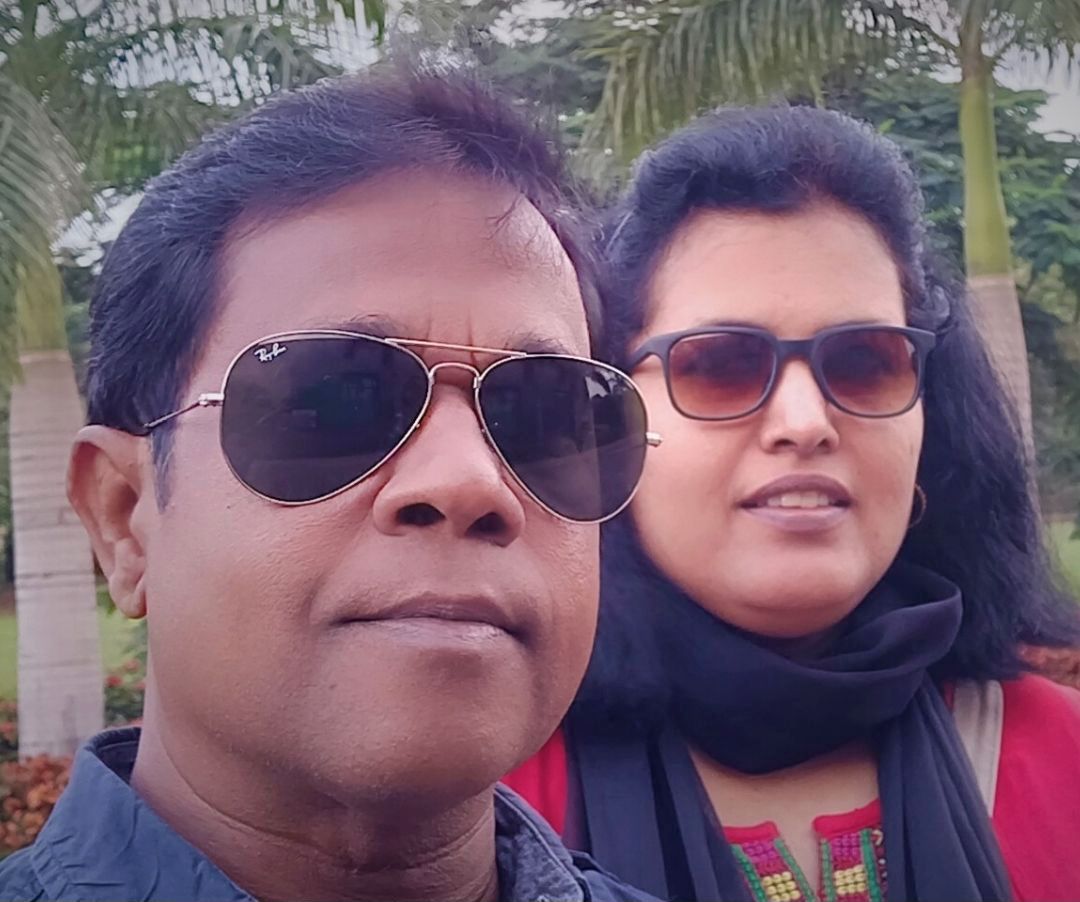
Sandy & Vyjay are a husband and wife duo who are travel content creators. They are co-founders of this travel website and are one of the leading travel content creators in India.
Sandy & Vyjay quit their successful corporate careers to pursue their passion for travel and writing full-time. Their dedication has earned them the “Best Travel Writer” award and numerous accolades on both national and international stages. Focusing on India’s destinations, heritage, and culture, they are passionate advocates for nature and the environment. Through their content, they promote ecotourism and sustainable travel, inspiring others to explore and preserve the beauty of India.
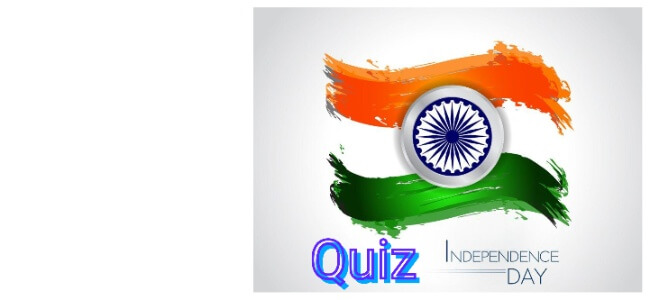
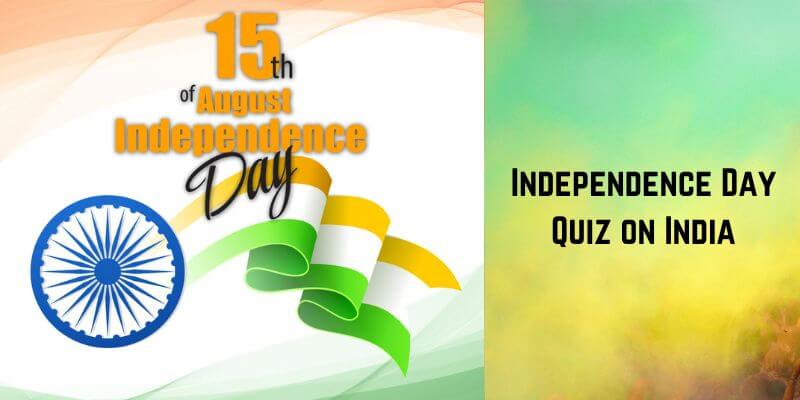

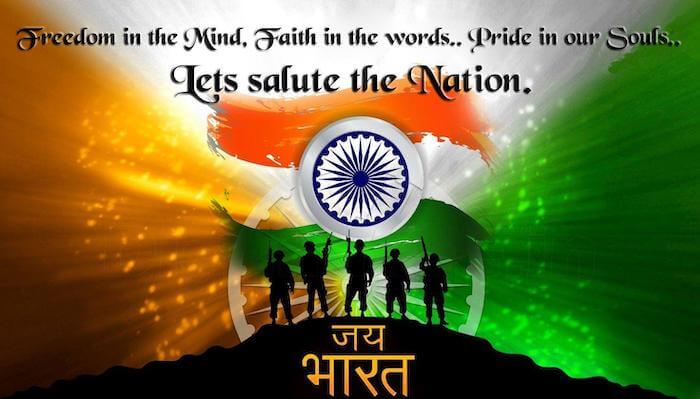
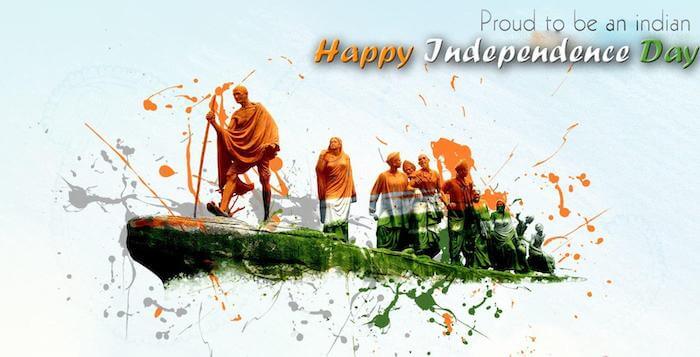
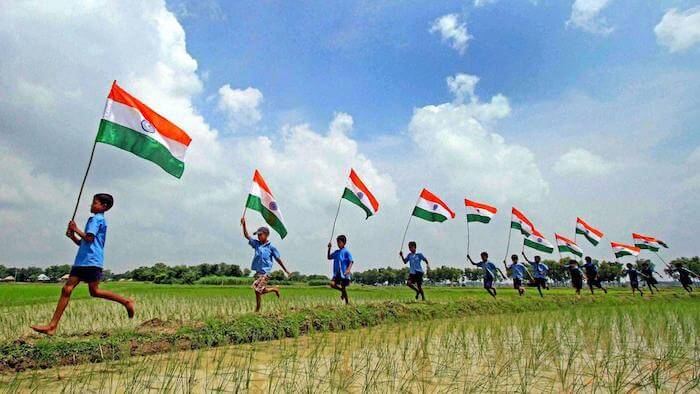
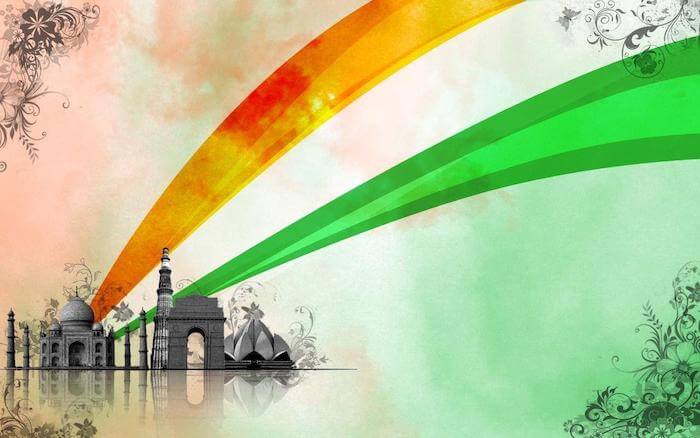

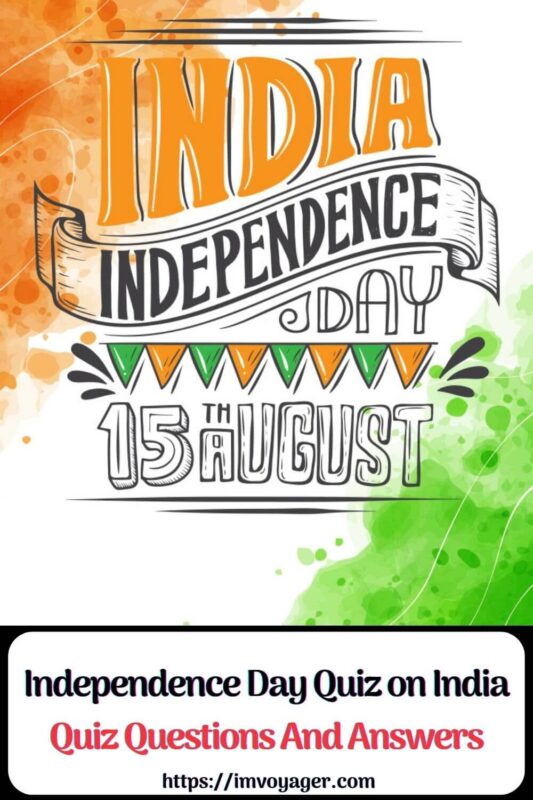



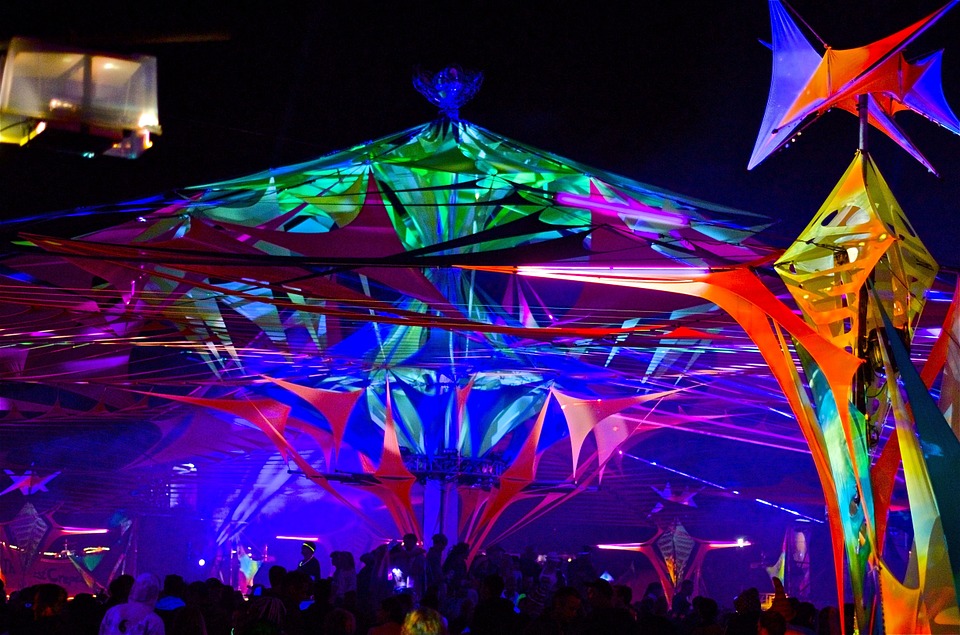
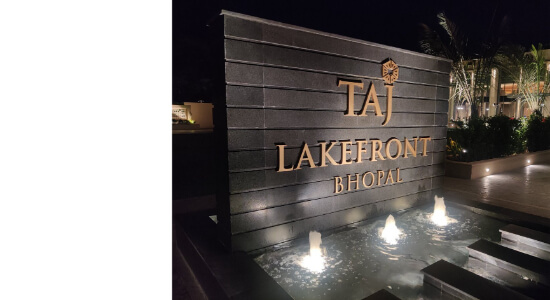
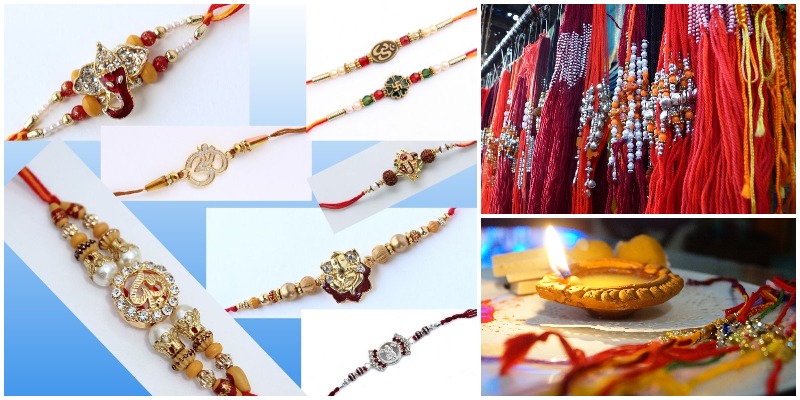
Wow
Hats off to you for curating such a detailed quiz. I will do this quiz with my kids.
Wow, this post is a great way to celebrate Independence Day and learn about India.The quiz sounds fun and educational, especially for kids. Thanks for sharing this unique post. I’m excited to check out your YouTube channel for travel tips and beautiful places.
This post will come in handy when kids and adults planning Independence Day programs at their building localities schools, or offices. Perfect idea for making the celebration fun by asking questions around the National Day.
This is really impressive that you shared so many questions for quiz, being in culural committee I will surely organize quiz in our society and your post is going to help me a lot!!
What a fantastic collection of quizzes! These questions really capture the spirit of India’s Independence Day. I can’t wait to challenge my friends and family with them. Great way to celebrate and learn more about our history!
What an amazing curation..it took me back to the days of learning history at school. I got most of them right. Yaay. Thanks for this.